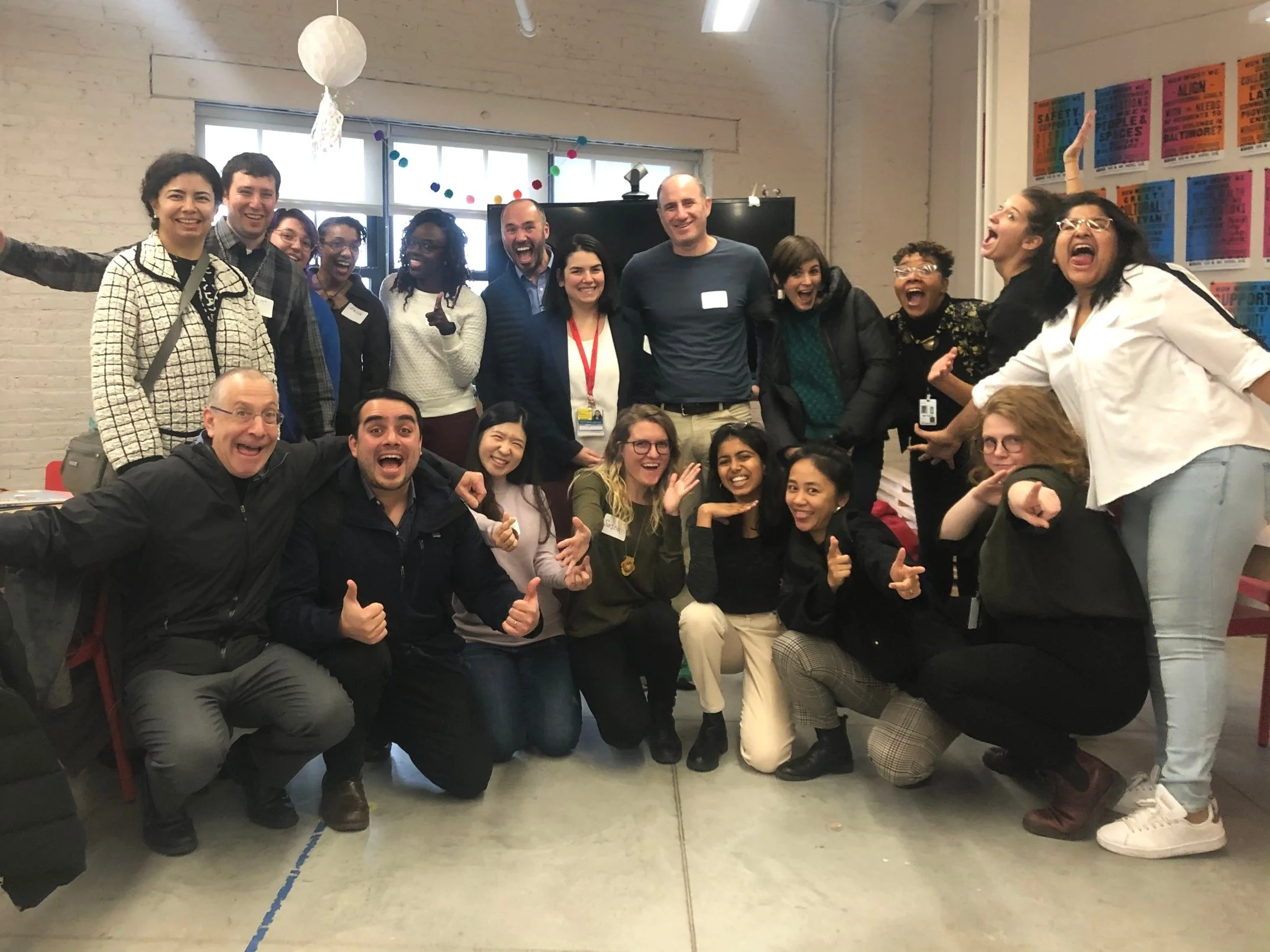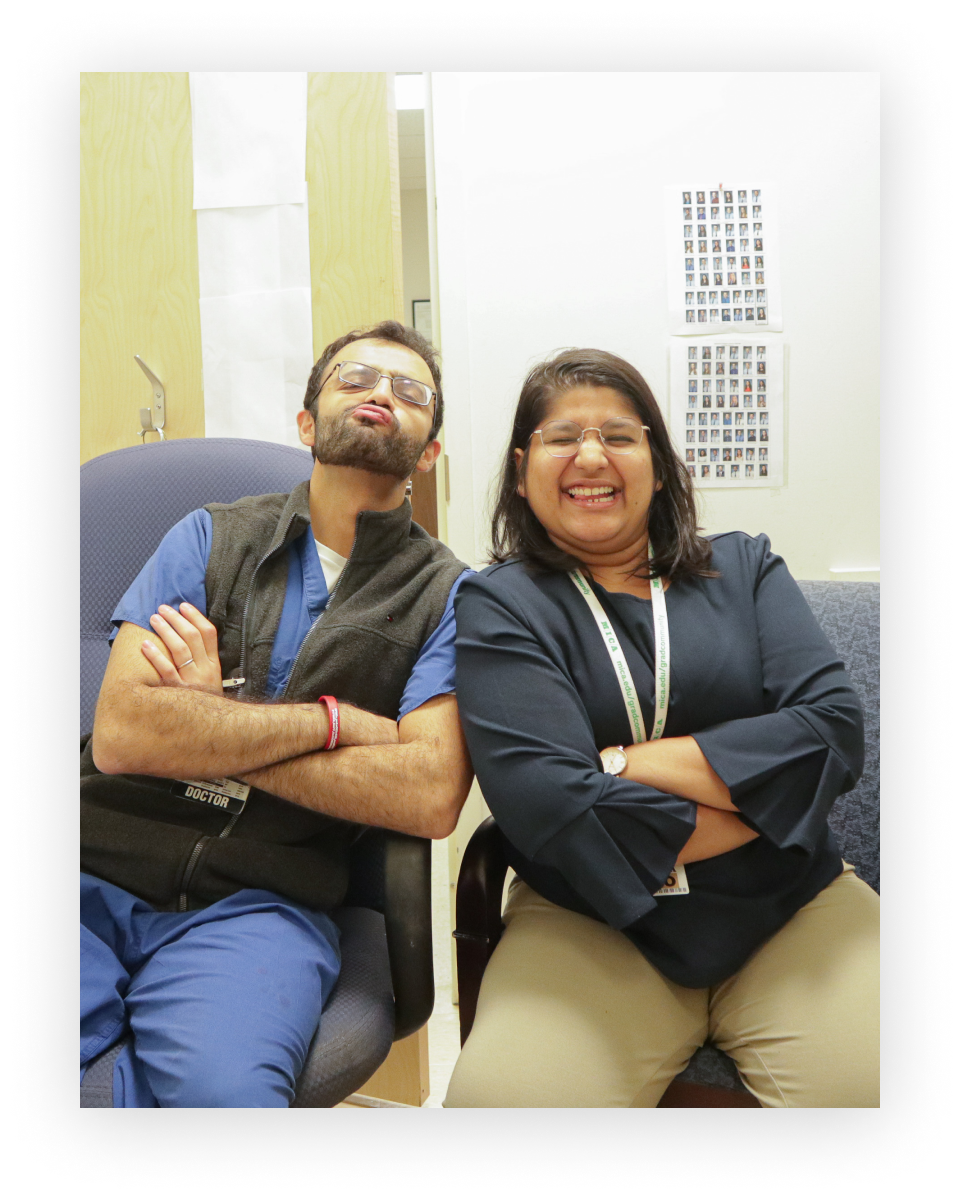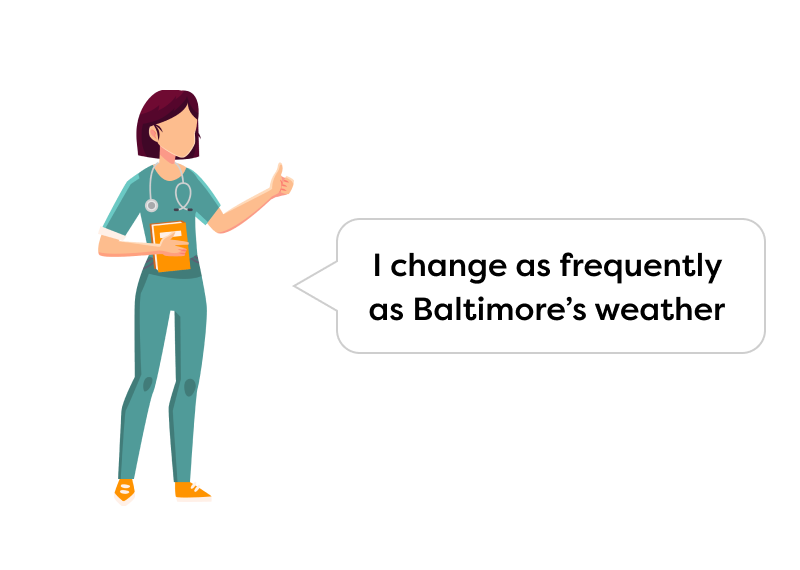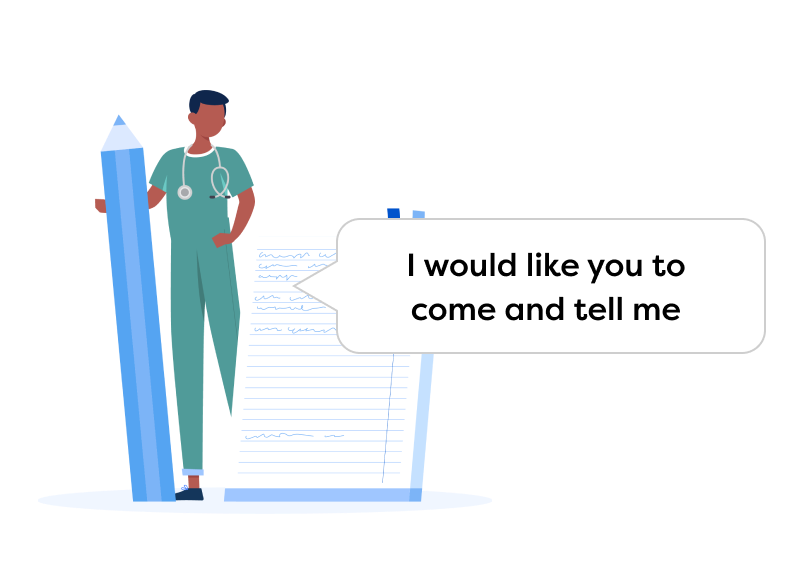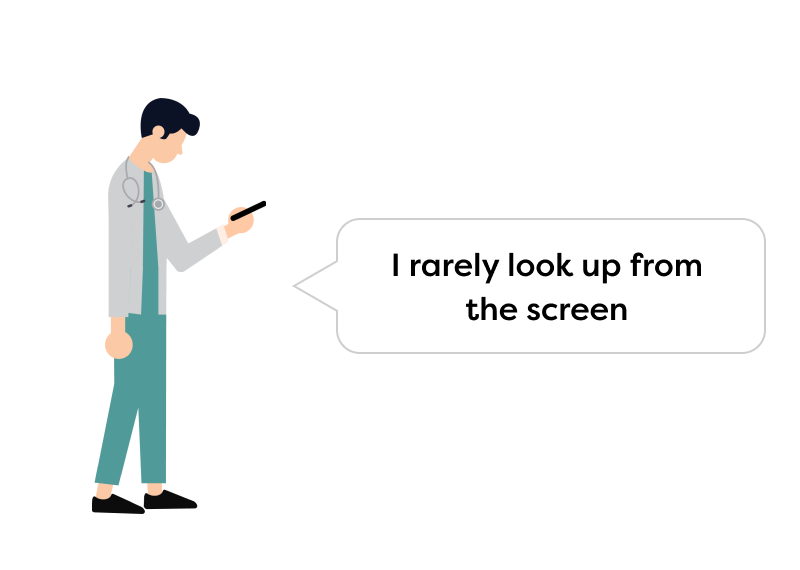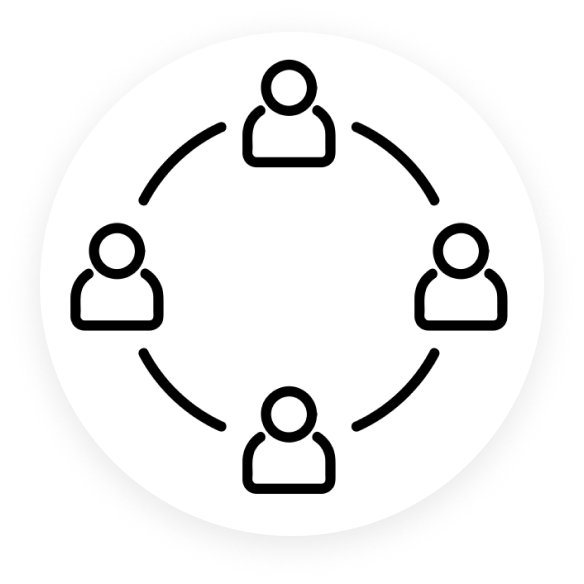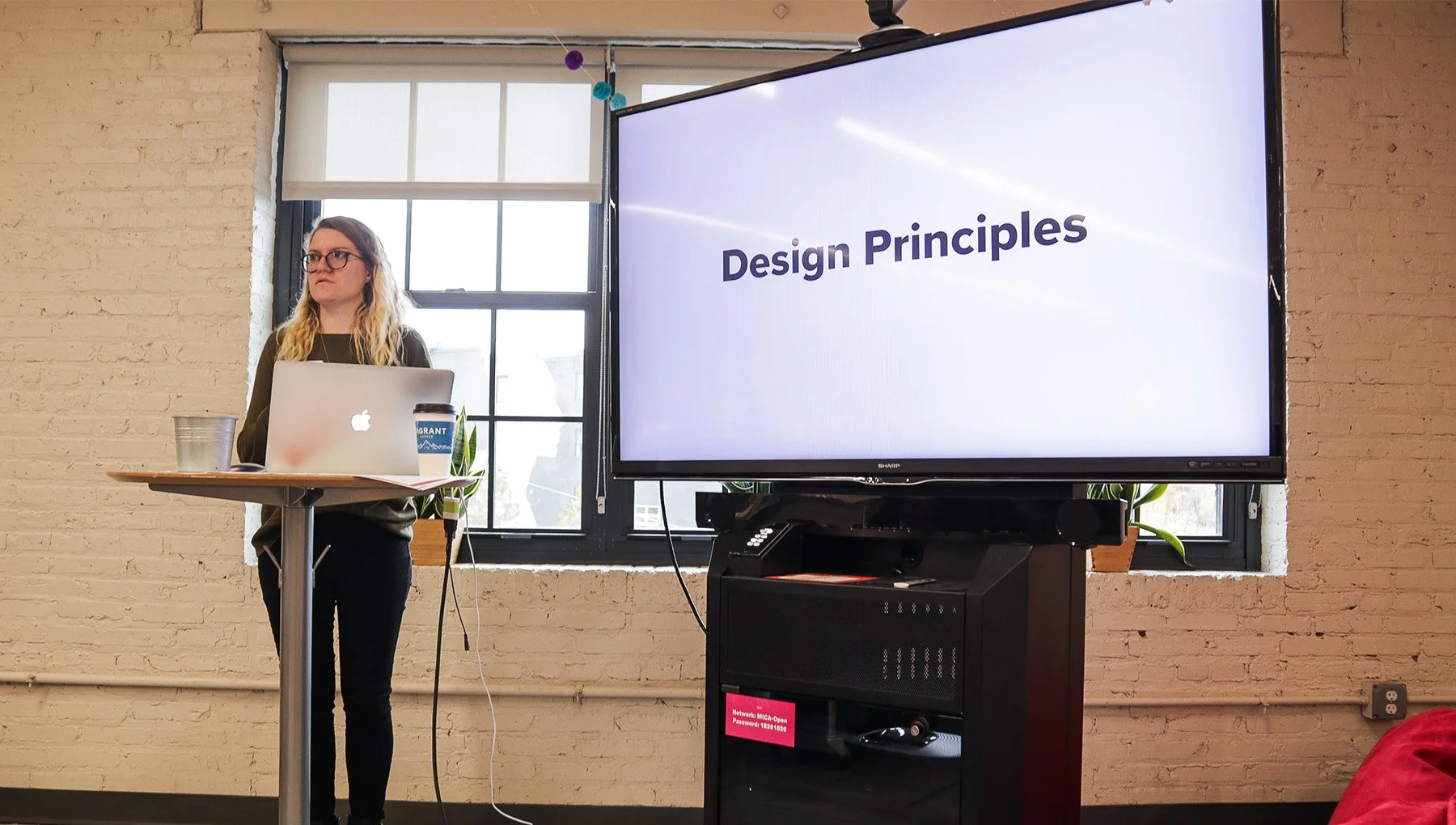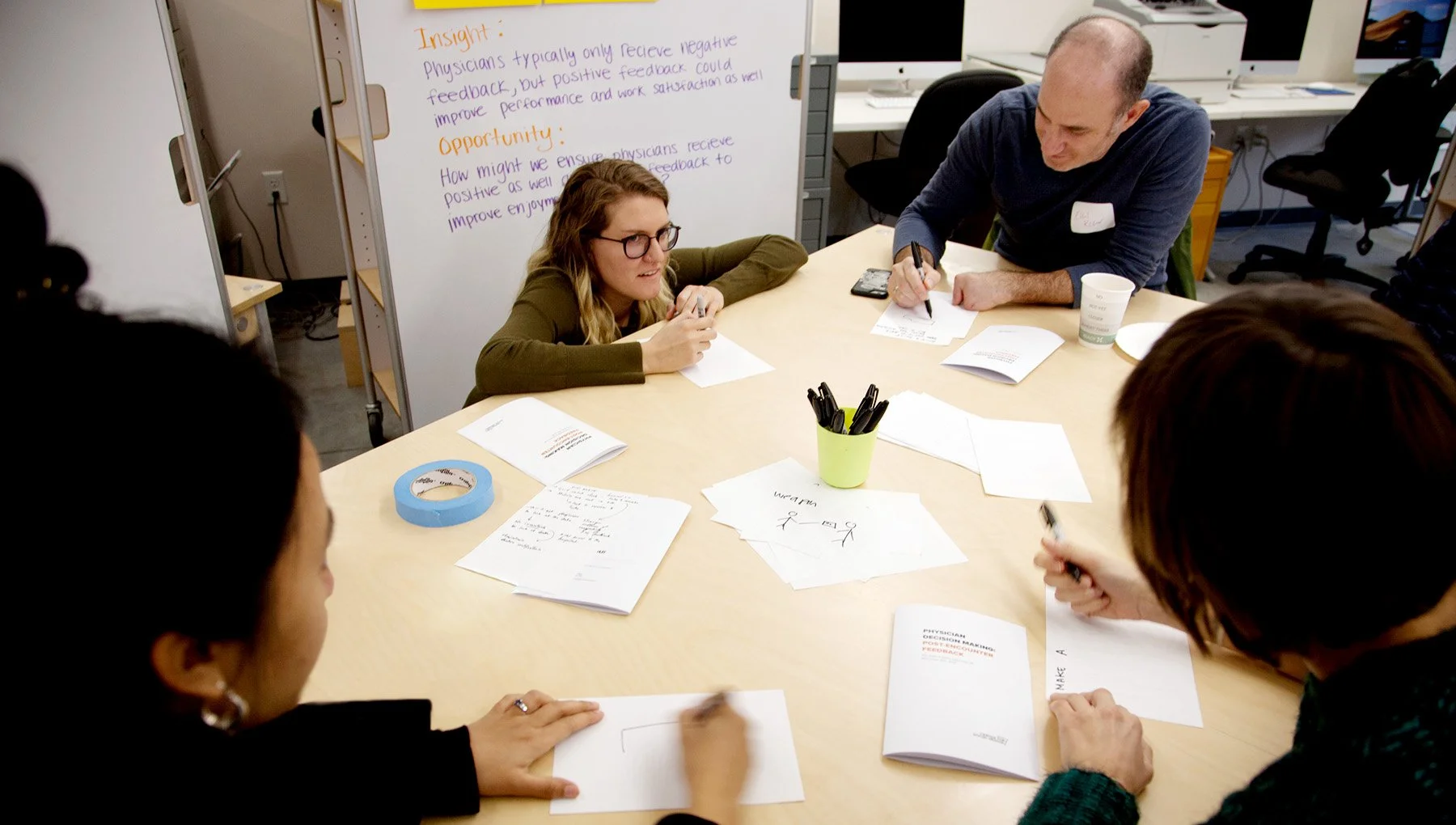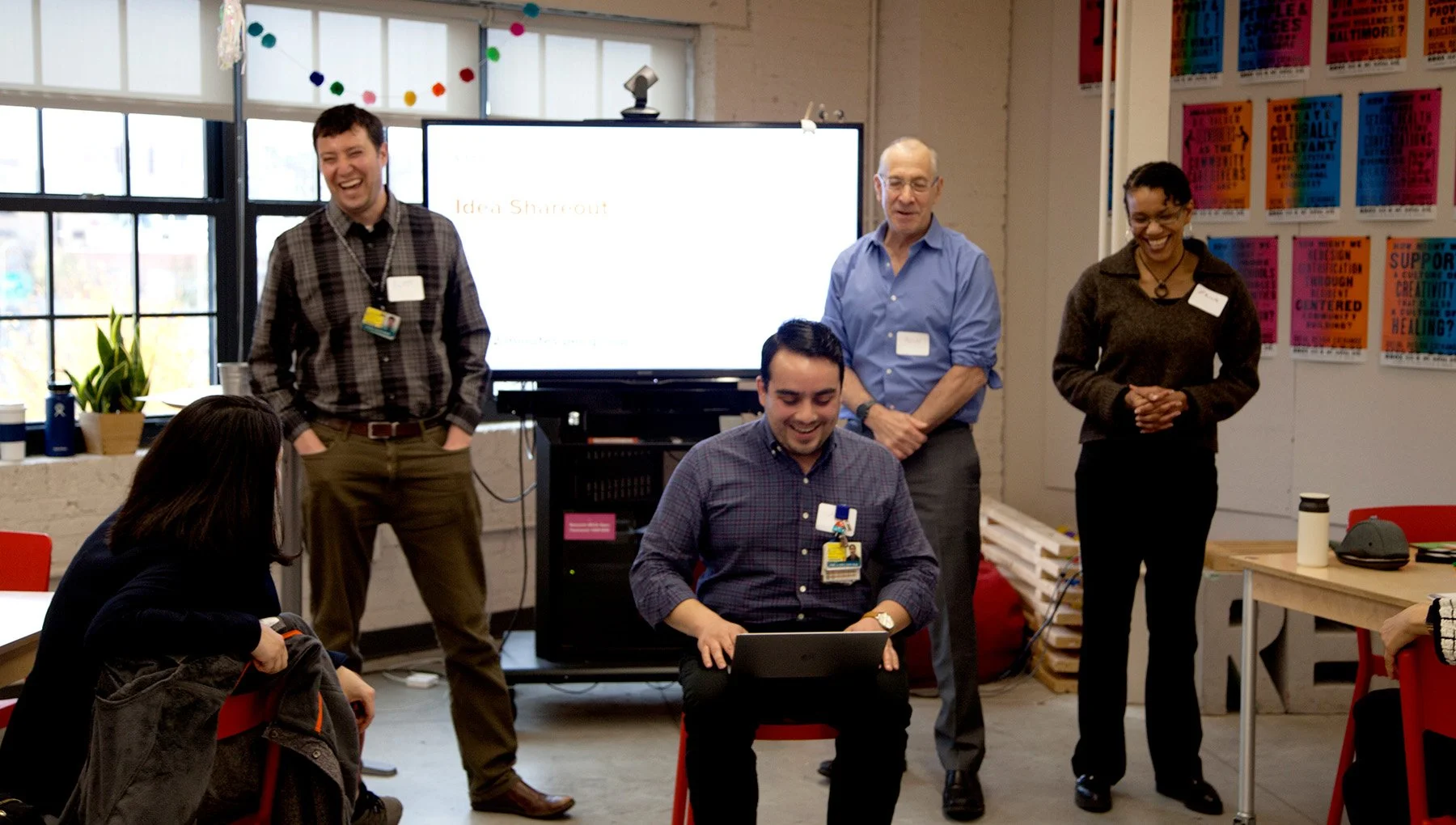
A post-encounter feedback loop for confident physician decision making
Emergency care physicians often do not receive updates on their patients after their visit to the emergency department (ED). This makes it difficult for physicians to have an understanding of the accuracy of their diagnosis and develop continuous learning practices. Therefore the Center for Social Design partnered with Johns Hopkins Medicine to develop a feedback loop for ED physicians.
Contributions
I was part of a team that conducted research and prototyping during a Practice-based Studio at MICA. This was the first phase of a five-year project.
Design principles
Interviewing
Rapid prototyping
Presentation
Survey creation
Experience map
User personas
Wireframe
How might we create a closed feedback loop with post-encounter data to better support physician decision making?
The Challenge
Emergency department (ED) physicians are often unaware of patient outcomes post-visit. This lack of patient information limits physicians ability to achieve outcome-driven decision making and develop continuous learning practices. The design challenge was to establish a closed-loop system of providing patient feedback to ED physicians. The initial focus was around lower respiratory tract infection (LRTI) outcomes. LRTI symptoms vary widely in patients making them difficult to diagnose and treat. Thus post-visit patient feedback would be crucial to developing more accurate future diagnoses.
The Connected Emergency Care (CEC) Patient Safety Learning Lab (PSLL) is a joint effort between the Center for Social Design and Johns Hopkins Medicine to reduce health and financial harm caused by a disconnected emergency care system. The five-year, longitudinal project will include multiple studios through the Center to integrate a variety of perspectives within the emergent care ecosystem. The goal of this five-year project is to generate solutions which are informed, user-centric and effective for practitioners and patients. The solutions generated will be implemented at two campuses: in Baltimore City (JHH) and Howard County (HCGH).
Research
Guiding the design process
The project began with being introduced to our partners from Johns Hopkins Hospital. They provided background on the ED and why the lack of post-encounter patient information is a problem for physicians. We also supplemented this information by reading through articles around topics of emergency medicine, physician decision making, ED culture as well as AI & data science. Through this background information we were able to develop guiding questions that acted as a way to frame the research:
Guiding research questions
What information is important and constructive for physicians?
What information and feedback do physicians currently base their decision making on?
How might we design incoming feedback/info and supporting systems to ensure the tool is used?
2 Emergency Department Tours
15 Interviews with Physicians
24 Survey Responses
The information gleaned from the research was then themed into categories. From these themes we then developed insights reflecting on information that was either interesting, shocking, or showed any tensions. From these insights we then developed 4 opportunity questions to share with our partners. These questions would be used to drive our design solutions.
Synthesis
Theme #1
Wanting positive and negative feedback
Insight
Physicians typically only receive negative feedback, but positive feedback could improve performance and work satisfaction as well.
Opportunity
How might we ensure physicians receive positive as well as negative feedback to improve enjoyment and practice?
Theme #2
Receiving streamlined and timely feedback
Insight
Physicians want to review post-encounter data, but a variety of institutional and individual constraints get in the way.
Opportunity
How might we provide access to real-time feedback, to improve physician decision making, without overwhelming physicians?
Theme #3
Trading- off between ED population management versus treating an individual patient
Insight
Physicians are expected to make accurate and detailed diagnoses for individual patients, while also making quick decisions to advance the patient queue.
Opportunity
How might we support high intensity decision making with post-encounter information?
Insight
EMR systems require unified information, but physicians want to be able to get patient-level data.
Theme #4
Customizing for patient care
Opportunity
How might we allow for physicians to specify and customize the post-encounter data they receive?
We developed personas of ED physicians as a way to ensure a full spectrum of personalities and work-styles are considered when going to brainstorming ideas.
Personas
Accepting Ava
Eager Ethan
Analogue Andy
Busy Betty
Decisive Derek
Digital Danny
We developed a list of design principles to describe the most important elements of our solutions and keep the team aligned in terms of what we are designing.
Design principles
Value Provider’s Choices
Have the design be easily customizable for the providers unique needs.
Make It Empowering
Use feedback as a way to promote growth and learning.
Put people First
Value all individuals involved in the process whether that be doctor or patient.
Keep It Clear & Simple
Have the design be intuitive, relevant, and easily accessible.
Keep It Responsive
Have the design evolve with
user feedback.
Practice Empathy & Compassion
Understand that physicians are making the best choices they can given the circumstances. Be mindful of the demands on physicians and design to support.
The team facilitate a shareback session where physicians and other stakeholders from Johns Hopkins were invited to get an update on our progress and participate in ideation.
Ideation session
Presentation of Progress
We delivered a presentation about our design process, the research we conducted and our synthesis findings.
Review of Themes
After the presentation, the session participants were split into groups and assigned to one of the 4 themes. In each group two team members explained the theme, made any edits based on feedback, and answered questions.
Brainstorming
We then transitioned to brainstorming. Each participant was asked to sketch as many ideas as possible to address the opportunity question.
Shareout
After the rapid-fire brainstorming each group selected one ideas to share out to the group. The catch was that the shareback had to be in the form of a “movie trailer” that had to be acted out. This silly activity created a judgment-free environment where people were encouraged to think of creative ideas.
Rapid prototyping
The team gathered the ideas from brainstorming session and broke them up into categories. Then each team member developed prototypes based on the categories. These low-fidelity mock-ups ranged from analogous ideas to digital systems. These prototypes were then shared with our partners for feedback. Below are a selection of those prototypes.
Project team
Kadija Hart
Vidisha Agarwalla
Harley French
Eesha Patne
Eunsoo Kim
Ayangbe Mannen
Associate
Cameron Morgan
Faculty Lead
Becky Slogeris

